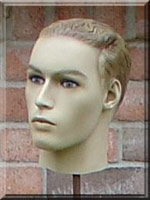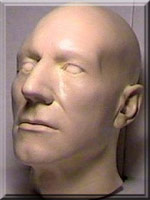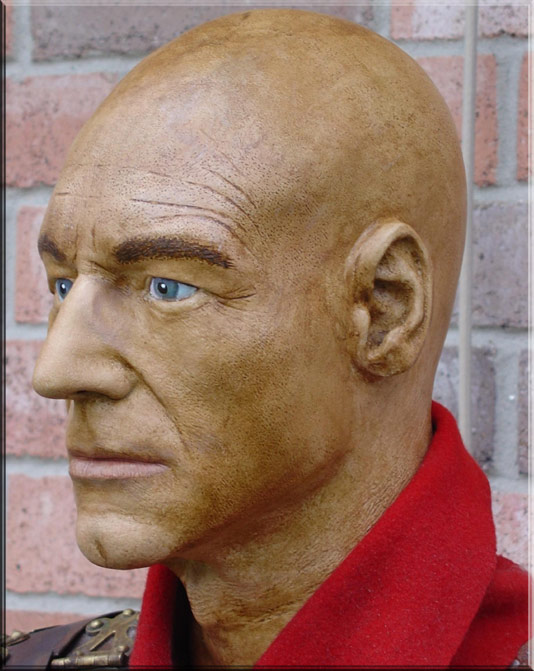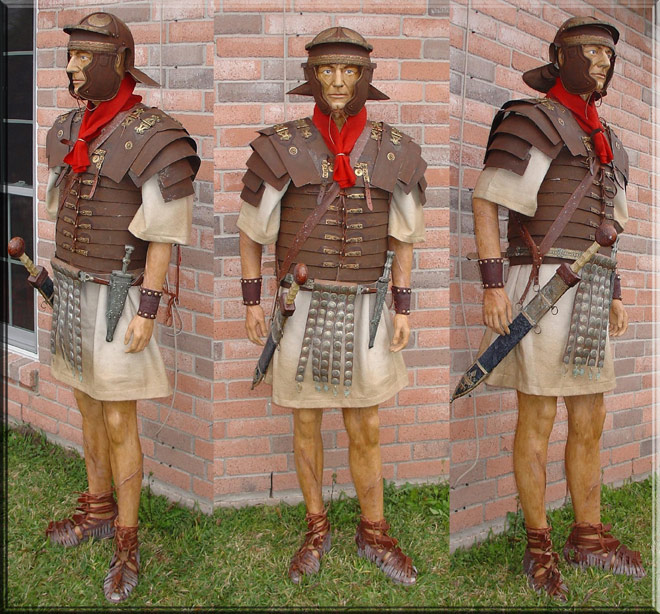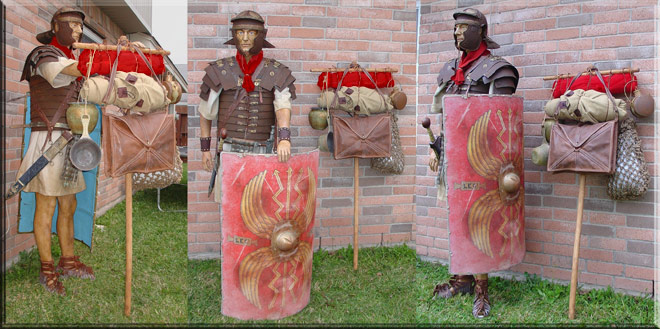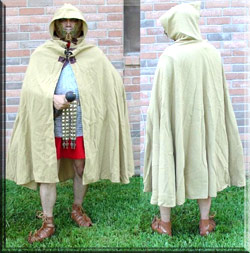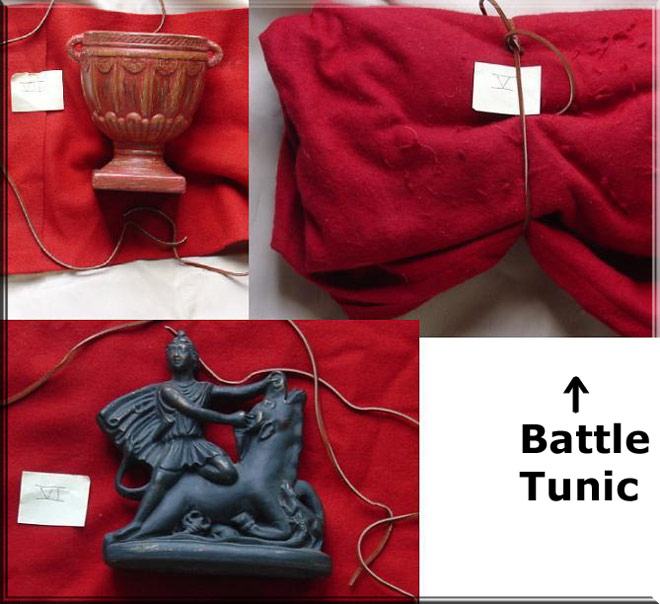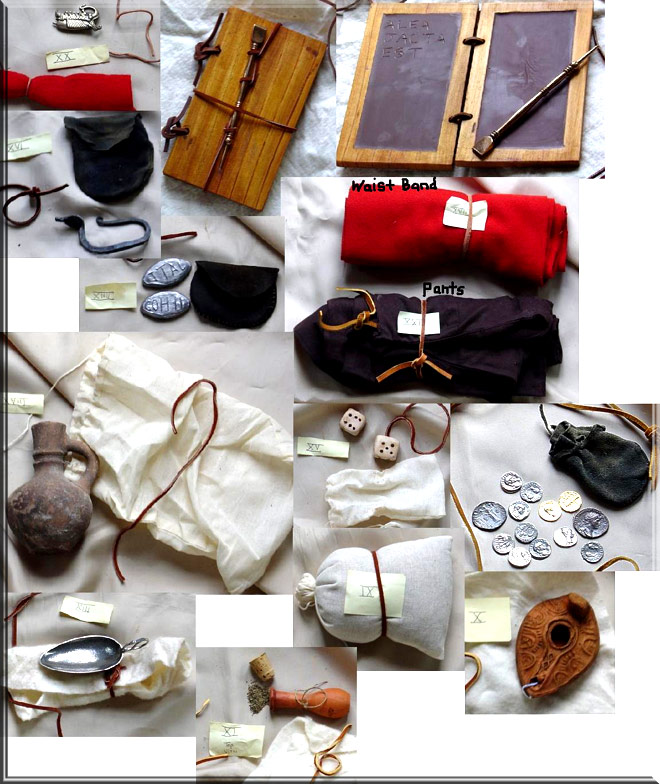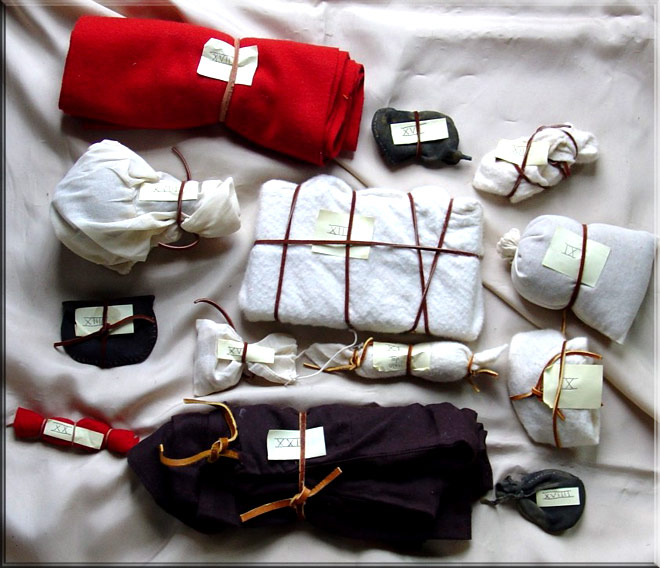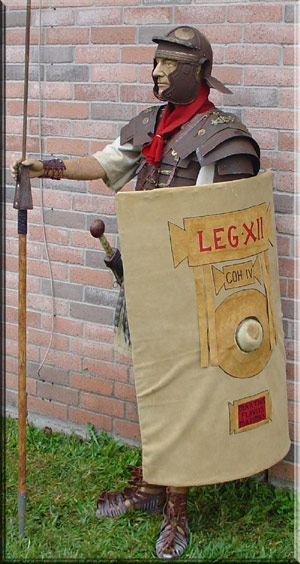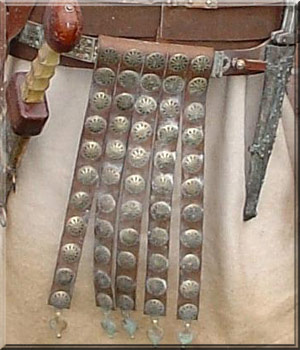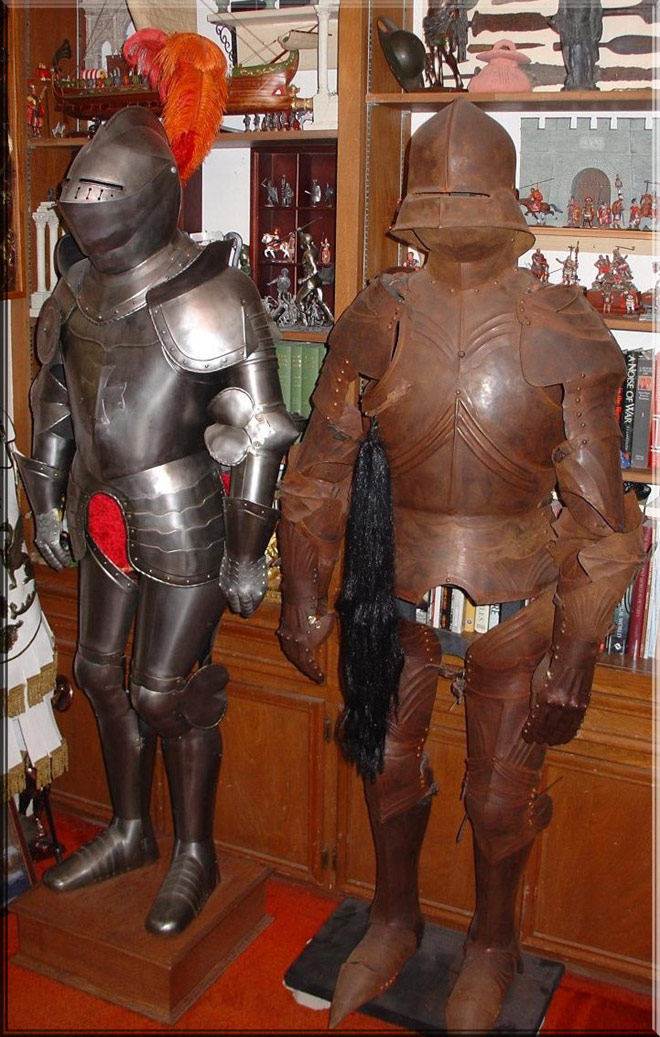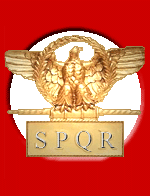

![]()
We've all seen the shiny version, but what about the legionary on endless campaign?
My goal with this project was to re-create a life-size legionary who had been away from the amenities and spare time afforded soldiers in their garrison forts. Instead, I wanted to depict a soldier who had been on hard-fought campaign for years, with all the wear-and-tear that would bring.
As an aside, I should say that I was happy moving forward with a certain quality of outcome in mind until I came across the similar work of the late Ronald Embleton. The amount of work and knowledge that went into his life size figures for museums was light years beyond what I had in mind. Sometimes a challenge is what it takes to get me kick started. This has happened off and on a few times in my life. Most of the time I challenge myself, to see if I could do it, but sometimes others can inspire me to go beyond the limits of what I believe I can do. This project owes a great deal to the inspiration of Embleton's work.
Getting the expression right
The problem with all male mannequins is that they look like supermodels. They have no character whatsoever, just a pretty face and that is exactly what I did not want. The image of the Legionary for this project was to be of a veteran nearing the end of his term of service. The baths of the fortress are only a faint memory it seems as he wears the sweat and grime of the battlefield like officers wear their medals. He has been wounded and returned to service time and again and although he fights for his Emperor, it is his Legion commander that instills the allegiance of the troops.
Although the mannequin I started with would have been fine for most displays, my first thoughts for this project was "off with his head!" I searched until I finally found the kind of head I looking for. Not a brute, but a regular man with some age and classical, strong features. That is what made Vespasian so well-loved. He was a people's Emperor and devoted his reign in setting examples for soldier and Emperor alike.
(The new head resembles both actor Patrick Stewart and the Kennewick Man--a 9,300 year old prehistoric man whose remains were found in the Columbia River basin. Talk about "classical" features!)
He is dirty from daily fieldwork and fighting. Fine dirt can even be seen in his facial pores. There are also highlights and shadows mixed in. All this was new to me, not to mention making scars! I almost did not attempt to do the eyes and was going to leave them blank because I know how important it is to get them right. I did not feel I could do life size eyes, but ultimately I decided to give it my best.
Light surface rust and oil mix makes blackened armor
Bluing or blackening of metal can be done several ways. These days, the blueing or blackening patina is done chemically or by heating carbon steel. A simpler but slower method is to control oxidization using a rust/oil mix over the metal. A thin layer of surface rust and oil makes a blue/black color on the iron below as a result of chemical reaction over time. The controlled oxidization forms a protective layer over the steel beneath it. Basically the rust/oil on the outside keeps oxygen from getting at the steel on the inside and allowing it to form an iron patina.
This process is part of a new theory as to how Roman soldiers, away on campaign, could easily keep their armor from rusting through. Surface rust was allowed to start on the iron and then it would be oiled. The iron/oil layer would start to take on a black patina underneath the oil and rust mix. The combined mix top coat and blackening undercoat would preserve the armor from rusting through the metal or even pitting the iron. This practice was also used in Medieval Europe, in the Renaissance, in the English civil war and numerous other wars. Remember Germany and Dacia were a rain forest 2000 years ago, so this type of protection would indeed be useful. The Romans already used oil as a rain and weather barrier on leather goods. See bottom of page for more of my thoughts on "field-blackened" armor.
Assembling his kit and gear
I had antiqued armor before for Walt Disney but I had never weathered and battered items or made them look dirty and grimy.
The marching pack is actually loaded with similarly distressed, period-accurate items.
red wool blanket paenula and fibula patera, stitula, and canteen ceramic jug and drinking cup duck-handled spoon spice jar and daily ration of red wheat-berries oil lamps and flint striker mithras statue writing tablet (inscribed with alea iacta est) two kinds of sling bullets tessarae coin purse with actual coins, braccae, and fascia ventralis.
. . . details and pictures below.
Contents of the Furca (marching kit)
Wood furca pole
Two wooden poles fitted together by grinding out, using files and sanding out an area measured out and centered. After the fitting was completed on the two wood poles, the two pieces were joined together by first gluing them and then using two screws and then leather wrapped. All three measures taken make for a very strong and durable baggage support apparatus able to hold up to any hard march. The entire T bar piece was then weathered to give it an old used look. The old "Marius Mule pole," you might say.Red wool blanket
A basic red wool sleeping blanket strapped to T bar at the top that was used at the fortress's bed or camp bed or for the ground.
Hooded paenula (cloak)
No actual military paenula has been found, but there is ample proof in military sculpture that these were common and they are best described as a hooded cape.
Many show a button (toggle) and loop connection holding them onto the wearer and this one has been made this way.
They could also double as an extra blanket on cold nights.
You could also fold them back over your shoulders to keep your arms usable while still wearing the paenula hanging down in front and back.
Canteen
Tinned Patera (cooking pan)
The piece has been weathered and aged so most of the natural beauty has vanished for this reason.Tinned Stitula (cooking pot)
Brass pot with tinned interior for cooking around the fire. Also weathered.Square leather furca bag (pera)
This leather case or bag is seen repeatedly on Trajan's column hanging from the T-shaped furca bars. They have X-shaped reinforcements and are incredibly strong.Net bag
These are seen all over Trajans column hanging from the T bar.Contents of the pera bag
V. Red Wool Tunic
Red wool is believed to be the color worn by legionaries for battle use only, based on the latest studies done by Graham Sumner. It is packed away in the leather carrying case.VI. Mithras Statue
Legionaries were very attached to the Mithras religion and most soldiers would have carried a household god with them of some sort for individual prayers when away from the Mithras cave temple at their base. This terricotta statue of Mithras is aged and wrapped in red wool with leather ties and stored in the leather case for protection.VII. Terricotta drinking cup
Legionaries were big on drinking and would have had more than just a canteen to drink out of around the camp fire or fortress. This is also stored in the leather bag and wrapped in red wool and leather ties for protection.
Contents of the net bag
IX. Daily ration of red wheat berries
A soldiers "one day" meal was contained, for protection, in one of the linen bags mentioned above and stored in the net bag.X. Oil lamp
This particular oil lamp is decorated, weathered and aged and has also been wrapped in red wool with leather ties for protection and is stored in the net bag.XI. Spice jar
This small jar with cork lid could be made to hold salt, pepper or any other small spice a soldier would like. It has been wrapped in red wool and tied with leather ties for field protection and is in the net bag.XII. Writing tablet and stylus
Period wax tablet authentically recreated in hollowed out wood with beeswax, and an excellent bronze stylus. Very Nice! The inside has a special message I wrote in Latin. "ALEA JACTA EST" It translates into "The die has been cast" which is what Caesar is quoted as having said as he crossed the Rubicon. It is wrapped in red wool with leather ties and is stored in the net bag.XIII. Roman duck handled spoon
Pewter Roman style spoon copied from finds in England.XIV. Roman sling bullets in lead
Two versions of cast Roman sling bullets are included. One says ITAL, the second COHORS II.XV. Tesserae (dice)
Roman dice have been found all over the empire and Roman soldiers even threw dice to see who got the robe of Jesus at the cross. These are fired clay ceramic dice, numbered in the Roman style.XVI. Flint Striker
This iron fire starter is a direct copy from a Roman original flint striker. I have encased it in it's own tiny Roman design leather bag with leather tie down to protect it from moisture and rust. The leather bag has been aged and the iron flint striker blackened.XVIII. Spouted jug from Israel
This particular jug was used as an olive oil or any other liquid pourer by the Romans. Based on real originals found n Nazareth, Judea (Nazare, Iudeai)XIX. Leather coin bag with money included
XX. Fibula (clasp)
XXI. Braccae (Roman breeches)
Roman pants started being used by the Roman due to their contacts with Barbarian peoples and became quite common among legionaries as well as auxiliaries.
Putting it all together: His look "on the march"
The legionary is wearing a wool tunic and focale, has a hand-made leather scutum cover and weather-antiqued pilum, pompeii gladius, cingulum, pugio and baldric.
I am especially proud of this weathered cingulum. The brass plates have black inlay, as do the discs.
How Roman armor may have looked on long campaigns
Pictures from WWII of victorious American GI's walking through the Arc d'Triumph in Paris show men in perfect uniforms, clean pressed shirts and pants, all carrying the same weapons and wearing the same perfect helmets which matched all the government war posters of the time. This type of perfection has always been portrayed in official War Bond funds raisers and recruiting posters through Korea and Vietnam.However, Vietnam film footage shows soldiers fighting many times without wearing their helmets or shirtless, some even had their sleeves rolled up to the arm pits, writings or drawing on their helmets and weapons were also seen a lot, etc. The graffiti or nose art painted on WW II bombers had to be removed or painted over before these planes could fly back to the states as this was not how the Army Air Corp. wanted to be portrayed to its citizens as these heroes returned home.
Even WW II German uniforms which looked so dashing in official posters did not always tell the whole truth. Many of the uniforms worn by the U-Boat sailors were captured British uniforms abandoned at Dunkirk. They also made unofficial metal decals of their cartoonish looking submarine mascots and would wear them on their hats or on their uniforms and even painted these mascots on their subs. Most of these mascots looked like Walt Disney cartoon characters.
A veteran Roman soldier of some 20 odd years, fighting in the forest of Germany during a 10 year campaign against the Germans, Dacians or Marcomanni may not have looked anything like the shiny soldiers we so often reenact. While we get so much of our information about Roman armor from the art of the time, metal armor of any type would not be colored rust brown in Roman mosaics for the simple fact that the artist would be trying to convey the fact or trying to show the viewer that the armor was indeed metal and not leather.
One should 'never say never' as there is still no archaeological proof that curved rectangular shields were ever used by the legionaries of the first and second centuries AD and the only one that has been found dates to later third century which most agree was a period when everyone says they used flat and oval shields. Many of the legionary shields from the Adamklissi monument look more Augustan. The only consistent thing about the Roman legions is their inconsistency. I had the same problems collecting and studying ancient coins and artifacts for 24 years. Interpretations and new studies always changed accepted past thinking.
Final Thought: Please do not get me wrong, I am not saying that this was the standard look of a legionary. I think the vast majority of the time, they had to keep their armor clean and shiny. My home town of San Antonio, Texas has many military bases and my brother was a Vietnam veteran. However, reality demands that we accept the difference in appearance of a soldier on base in San Antonio, and how that same soldier may have looked on Hamburger Hill in 1969. Same army, same uniform, but the situation and environment will always make it necessary for a soldier to adapt the best he can.Another dramatic example of rust-oil patina on real armor:
The ancient Romans armor was not like we use today. Our thickness for Lorica Segmentatas is based on medieval armor. The actual thickness of the Corbridge armor is between 20 to 22 gauge and not 16 to 18 gauge like every one uses today. I have held many Lorica segmentata fittings in my hands over the years due to my hobby of collecting military artifacts. They are very very very light duty. I am talking about the J- hooks used on the front and back as well as the decorative hinges. The Romans hammered and mixed 50% iron ore with 50% charcoal. This actually gave the armor more strength and would darken it some as well. That way 20 to 22 gauge iron would be just as strong as 16 to 18 gauge modern iron. Also iron could be darkened in other ways, such as heat. Blued or blacked iron makes for a better rust resistant ability then most think. I blued some iron one time just to practice making an even color. One area was too dark. It was very difficult to rub off the darker blue in order to make it match the other blue.
